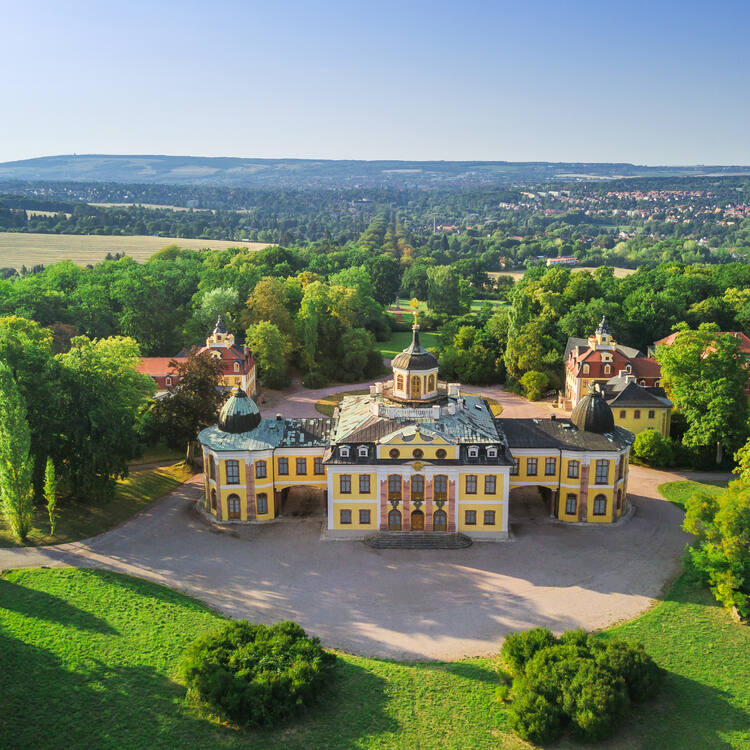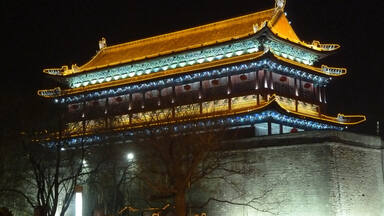Classical Weimar
Classical Weimar
In the late 18th and early 19th centuries the small Thuringian town of Weimar witnessed a remarkable cultural flowering, attracting many writers and scholars, notably Goethe and Schiller. This development is reflected in the high quality of many of the buildings and of the parks in the surrounding area.
Description is available under license CC-BY-SA IGO 3.0
Weimar classique
À la fin du XVIIIe et au début du XIXe siècle, la petite ville de Weimar en Thuringe connut un remarquable épanouissement culturel, attirant nombre d'écrivains et d'érudits, notamment Goethe et Schiller, comme en témoigne la grande qualité de nombre de ses bâtiments et des parcs dans les environs.
Description is available under license CC-BY-SA IGO 3.0
مدينة فايمار الكلاسيكية
في نهاية القرن الثامن عشر وبداية القرن التاسع عشر، عرفت مدينة فايمار الصغيرة في ثورينغ ازدهاراً ثقافياً كبيراً وقد اجتذبت عدداً من الكتاب والبحّاثة، لا سيما غوتي وشيلر. وتشهد النوعية الممتازة لعدد من مبانيها والمنتزهات في الجوار على هذا الموضوع.
source: UNESCO/CPE
Description is available under license CC-BY-SA IGO 3.0
古典魏玛
18世纪末至19世纪初,魏玛这一图林根(Thuringian)小城见证了当时文化的极度繁荣,吸引了许多作家及学者如歌德(Goethe)、席勒(Schiller)等。这种发展在周围地区高水平的建筑物和公园中也可见一斑。
source: UNESCO/CPE
Description is available under license CC-BY-SA IGO 3.0
«Классический Bеймар»
В конце XVIII - начале XIX вв. небольшой тюрингский город Веймар переживал период замечательного расцвета культуры, что привлекало многих писателей и ученых, и прежде всего – Гете и Шиллера. Этот расцвет проявился и в высоком качестве зданий и парков в окружении города.
source: UNESCO/CPE
Description is available under license CC-BY-SA IGO 3.0
Weimar clásica
A finales del siglo XVIII y comienzos del XIX, la pequeña ciudad de Weimar (Turingia) fue testigo de un importante renacimiento cultural, atestiguado por la notable calidad de muchos de sus edificios y de los parques de sus alrededores. En esa época atrajo a numerosos escritores y eruditos como Goethe y Schiller.
source: UNESCO/CPE
Description is available under license CC-BY-SA IGO 3.0
古典主義の都ヴァイマール
source: NFUAJ
Klassiek Weimar
Source: unesco.nl
Outstanding Universal Value
Brief synthesis
In the late 18th and early 19th century the small Thuringian town of Weimar witnessed a remarkable cultural flowering, attracting many writers and scholars, notably Goethe (1749-1832) and Schiller (1759-1805). This development is reflected in the high quality of many buildings and parks in the surrounding area.
It was in the lifetime of Duchess Anna Amalia (1739-1809) that Weimar’s Classical period began. She appointed the poet Christoph Martin Wieland (1733-1813) as tutor to her sons in 1772. It was after Carl August (1757-1828) had succeeded to the Duchy that Johann Wolfgang Goethe settled in the town (1775). Johann Gottfried Herder (1744-1803) came to Weimar in the following year. The high point of the town's cultural influence resulted from the creative relationship between Goethe and Friedrich Schiller that began in 1794 and was intensified when Schiller moved to Weimar in 1799.
The World Heritage properties comprises twelve separate buildings or ensembles: Goethe's House and Goethe´s Garden and Garden House; Schiller's House; Herder Church, Herder House and Old High School; Residence Castle and Ensemble Bastille; Dowager's Palace (Wittumspalais); Duchess Anna Amalia Library; Park on the Ilm with the Roman House; Belvedere Castle and Park with Orangery; Ettersburg Castle and Park; Tiefurt Castle and Park; and Historic Cemetery with Princes´ Tomb.
Criterion (iii): The high artistic quality of the public and private buildings and parks in and around the town testify to the remarkable cultural flowering of the Weimar Classical Period.
Criterion (vi): Enlightened ducal patronage attracted many of the leading writers and thinkers in Germany, such as Goethe, Schiller, and Herder to Weimar in the late 18th and early 19th century, making it the cultural centre of the Europe of the day.
Integrity
Classical Weimar includes all elements necessary to express the Outstanding Universal Value of one of the most influential cultural centres in Europe. It is of adequate size to ensure the features and processes which convey the significance of the property.
Authenticity
Despite the considerable degree of restoration and reconstruction required as a result of wartime damage, the level of authenticity of these properties is high. Every effort has been made to use the extensive documentation available to ensure the accuracy of reconstruction work, and there has been scrupulous attention to the use of authentic materials in most cases.
Protection and management requirements
All components of the property, with the exception of the Historic Cemetery, are listed in the monuments list of the Free State of Thuringia (Denkmalbuch des Freistaates Thüringen), and are thus protected under the provisions of the relevant monuments protection law (Thüringer Denkmalschutzgesetz) of 7 January 1992. In addition, all except the City Church, Herder House, the Old High School, the Residence Castle, and the Historic Cemetery are covered by the law of 8 July 1994 establishing the Foundation Klassik Stiftung Weimar (Thüringer Gesetz über die Errichtung der Stiftung Weimarer Klassik). These laws impose strict controls over all activities in or around the components that may adversely affect their state of conservation or their surroundings.
The City Church and Herder House are church property, belonging to the Evangelical-Lutheran Congregation of Weimar (Evangelisch-lutherische Kirchgemeinde Weimar). The Old High School and the Historic Cemetery are owned by the City of Weimar. Part of the Residence Castle, theBastille (Hofdamenhaus), is owned by the Foundation for Thuringian Castles and Gardens (Stiftung Thüringer Schlösser und Gärten). This body, like the Foundation Klassik Stiftung Weimar, which is the owner of the remaining components of the property, is a foundation under public law responsible for the management of public goods.
A management plan has been developed which prioritizes conservation measures and includes strategies for visitor management, risk prevention and development pressure. The management plan is given to local and regional government offices as a basis for planning and will serve as an implementation guide for the supervising administrations.

 View photos from OUR PLACE the World Heritage collection
View photos from OUR PLACE the World Heritage collection
